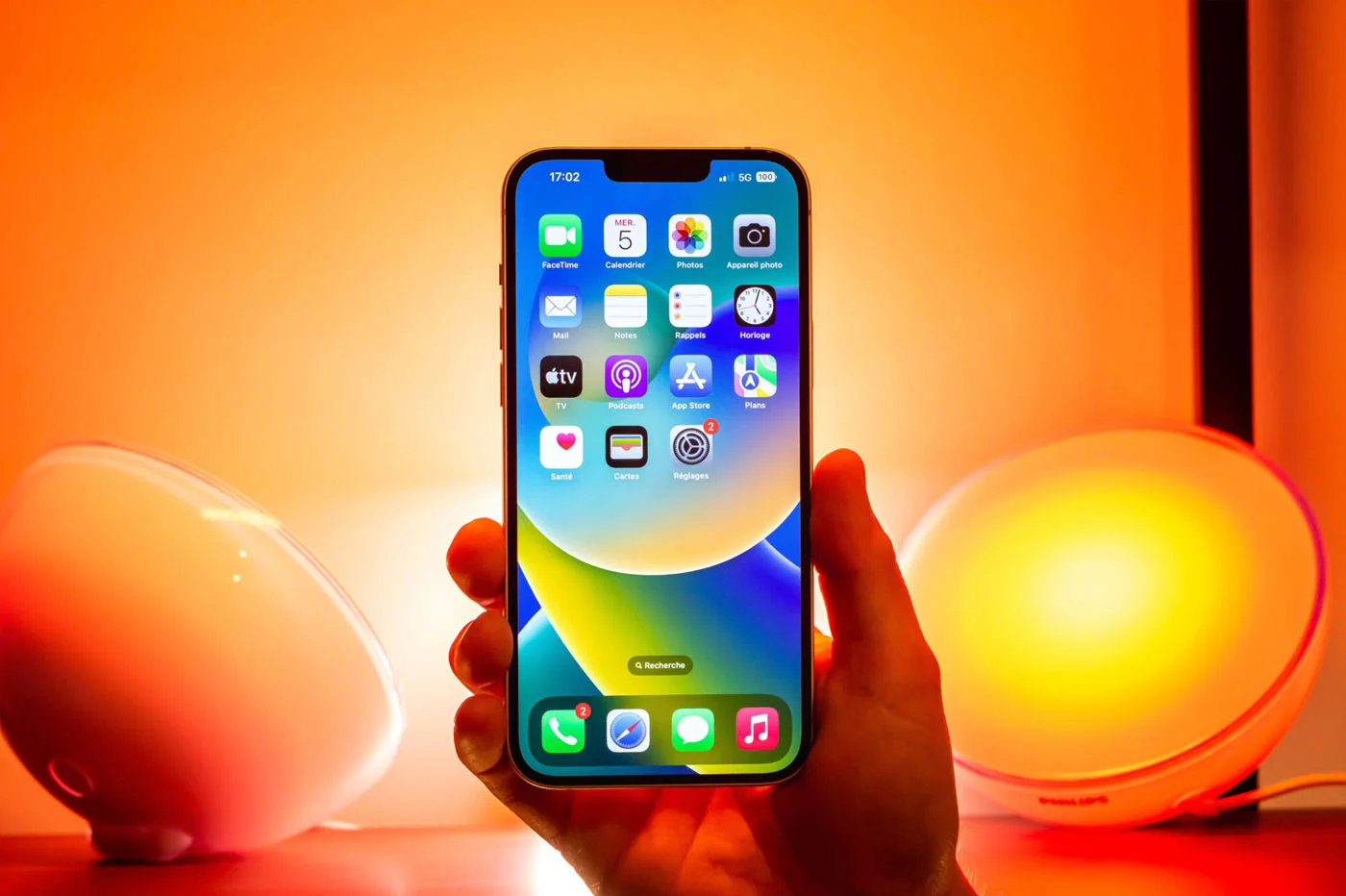The capacity of a battery is often stated in mAh (milliamp hour), but it is actually measured in Wh (watt hour). This is the charging capacity, or power, which is measured in mAh. The actual battery capacity (or energy) depends on this charging capacity and the voltage used. The formula between the three data is as follows:
Capacity in Wh*1000 / voltage in V = charge in mAh
And precisely, with regard to the iPhone 13, we can already have access to this measurement in Wh (which would therefore indicate the capacity of its battery). According to information on the siteChemtrec, for the 4 models, there would indeed be a significant gain compared to the last generation of iPhone. Which, among other parameters, would allow Apple's new smartphones to bemuch more autonomous than their 2020 predecessors.
Here is the detailed data in Wh, with the ratio in mAh as an indication, calculated on the basis of a voltage of 3.8 V, the typical voltage for an iPhone battery:
- iPhone 13 mini :battery at 9.57 Wh, compared to 8.57 Wh for the iPhone 12 mini. For the same voltage of 3.8 V, we would be at2 518 mAhfor the iPhone 13 mini, against2 255 mAhfor the iPhone 12 mini (+13%)
- iPhone 13 :battery at 12.41 Wh, compared to 10.78 Wh for the iPhone 12 mini. For the same voltage of 3.8 V, we would be at3 266 mAhfor the iPhone 13, against2 836 mAhfor iPhone 12 (+14%)
- iPhone 13 Pro :battery at 11.97 Wh, compared to 10.78 Wh for the iPhone 12 mini. For the same voltage of 3.8 V, we would be at3 150 mAhfor the iPhone 13, against2 836 mAhfor iPhone 12 (+10%)
- iPhone 13 Pro Max :battery at 16.75 Wh, compared to 14.13 Wh for the iPhone 12 mini. For the same voltage of 3.8 V, we would be at4 409 mAhfor the iPhone 13, against3 718 mAhfor iPhone 12 (+18%)
If our calculations are correct and if the 3.8 V voltage is well respected in the batteries of these new iPhones, the 13 Pro Max model would bethe first iPhone to exceed 4,000 mAh.
Obviously, knowing the number of mAh of a battery, or even the number of Wh does not mean that we know how many hours it can last. It all depends on the consumption of the different components and the use of the smartphone. We can, however, imagine that with these new larger batteries (as specified by Apple), better capacities (as seen in our calculations) and with more energy-efficient components, including the A15 Bionic processor, the autonomy on the new generation of iPhone is experiencing a nice jump compared to the 2020 generation.
This is also what the Californian proudly announced during its conference and on its website: an hour and a half more for the iPhone 13 mini compared to the 12 mini, two and a half hours more for the iPhone 13 compared to iPhone 12, same for iPhone 13 Pro and iPhone 13 Pro Max respectively, compared to iPhone 12 Pro and 12 Pro Max.
All that remains is to see if in reality, these figures really translate into a gain in autonomy. We are therefore waiting for the first feedback on YouTube from specialists in the field!
Editor-in-chief for iPhon.fr. Pierre is like Indiana Jones, looking for the lost iOS trick. Also a long-time Mac user, Apple devices hold no secrets for him. Contact: pierre[a]iphon.fr.






